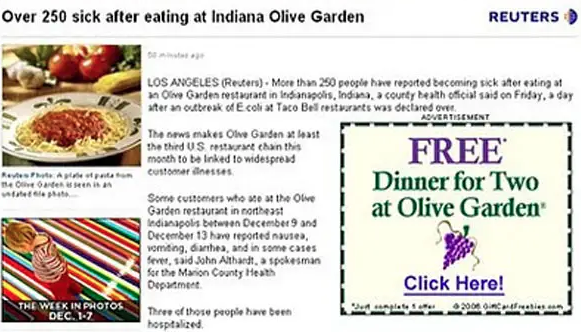Why AI Shortcuts Can Lead to Marketing Dead Ends
Shortcuts aren’t always a bad thing. We’ve all performed tasks that were needlessly time consuming or convoluted, and removing steps ultimately improved the process. It’s the idea behind the concept of “working smarter, not harder.” However, there are times when shortcuts can lead us down a dangerous path, which is what we’re seeing today when it comes to AI-generated content and some forms of automated ad buying. While both have a place in online marketing, misuse of either – or a misunderstanding of how they work – can have harmful results.
AI-Generated Content
ChatGPT and other AI content generators have taken the world by storm. This technology can be very beneficial in the self storage industry as we wrote about in a recent story, The AI Revolution. We highlighted how it can be used to advance chatbots, security, revenue management systems, and more. However, in the hands of marketers–who always have content on their minds–AI can pose problems when used incorrectly.
While AI is great for generating content ideas, asking it to create content is asking for trouble. AI content is essentially just a mathematical calculation of what words are most likely to come after other words, with a lot of look-back and reinforcement models. There’s nothing exceptional about it. Using it without proofing, fact-checking, editing, and refining it puts out very average, potentially redundant, and sometimes completely incorrect content.
A reliance on AI-generated content can also really get Google’s goat. Although the search engine has removed its prohibition of AI-generated content, it still expects websites to put out content that puts people first, meaning it must be valuable. Therefore, using AI content to “game the algorithm” is likely to be detected, and Google will penalize you for it. In fact, some experts predict that a massive shakeup along the lines of the Google Panda update of 2011 is on the horizon.
That update, which impacted search rankings for nearly 12% of queries in the U.S., reduced rankings for low-quality sites (those that copy content from others or are just not very useful) and improved rankings for high-quality sites (those with original content and information such as research, in-depth reports, thoughtful analysis and so on).
Automated Ad Buying
A lot of digital advertising is now accomplished through modern programmatic platforms that manage real-time ad buying, selling, and placement. Known as automated ad buying or programmatic advertising, these platforms can be very effective, saving advertisers time, maximizing ad spend, and achieving a much higher return on investment.
However, bidding and buying through intermediary marketplaces where no relation exists between the buyers and the publisher and AI does all the heavy lifting can be risky. With these forms of ad buying, your ad could wind up being next to content, or on a website, you don’t want your brand anywhere near.
“What marketers gain in ease of purchase, scale, and reach, they lose in quality, safety, and audience insight of your creative advertising,” explains Robert Rose, chief strategy advisor for the Content Marketing Institute (CMI). CMI recently shared several comical examples of ads juxtaposed with content that does them no favors.


Another reason to be wary of automated ad purchases with intermediaries is that many placements wind up on unreliable AI-generated news sites (they even have an acronym, UAINs). These fringe news websites, which are beginning to proliferate, use AI to create inauthentic content; they fabricate events, medical advice and celebrity death hoaxes, “reshaping the misinformation landscape online” writes The New York Times.
A NewsGuard report on the credibility of UAINs found that many advertisers (including global banks, a high-profile sports apparel company, an auto manufacturer, and others) had unknowingly supported the spread of unreliable AI-generated news by participating in automated ad buying. Not something any reputable brand wants to be a part of, of course.
When engaging in automated ad buying, marketers are encouraged to look for a feature called Brand Safety that helps prevent reputation-ruining placements like these.
Self Storage Marketers: Be Wary of Shortcuts
Constantly creating new content can be challenging, and purchasing ad space can be expensive, but when it comes to your business’ reputation, it’s important not to take shortcuts. Using AI-generated content can ultimately harm your website, while automated ad buying with intermediaries can unintentionally associate your business with bogus news. The best bet is to always have a hand in the content you create and the ads you place.
—
Brad Hadfield is a staff writer and news researcher for Messenger. He also manages the MSM website.
More Content
Popular Posts
Recent Posts
In April 1984, the first non-stop commercial...
Raise your hand if you’ve ever made plans,...
Everyone knows it: Investing in real estate...
They say when one door closes, another one...
Like its name implies, Surprise, Ariz., a...
Self-storage has become as reliant on the...
Having a strong online presence is...
Social media and search engine...









